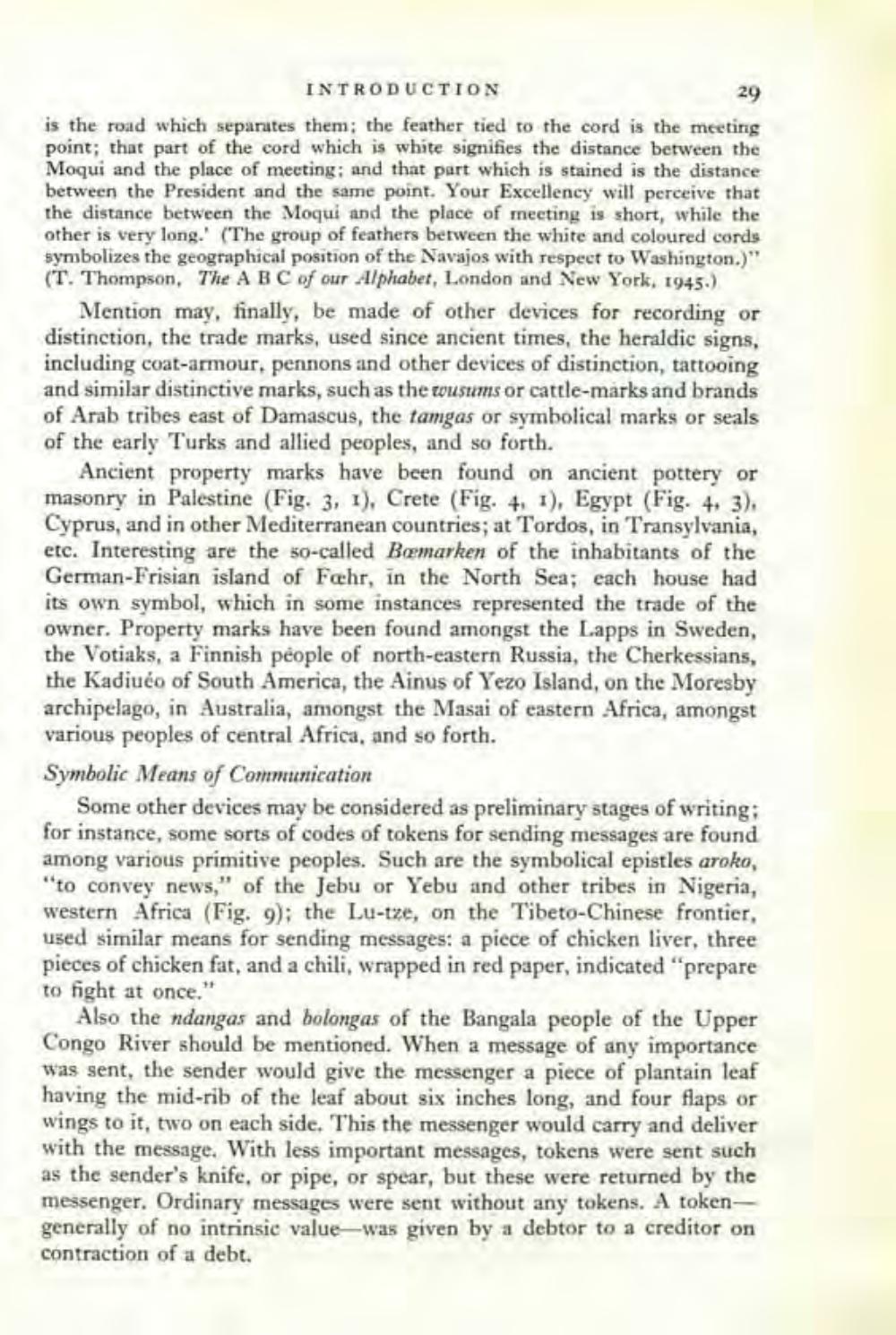________________
INTRODUCTION
is the road which separates them; the feather tied to the cord is the meeting point; that part of the cord which is white signifies the distance between the Moqui and the place of meeting; and that part which is stained is the distance between the President and the same point. Your Excellency will perceive that the distance between the Moqui and the place of meeting is short, while the other is very long.' (The group of feathers between the white and coloured cords symbolizes the geographical position of the Navajos with respect to Washington.)" (T. Thompson, The ABC of our Alphabet, London and New York, 1945.)
Mention may, finally, be made of other devices for recording or distinction, the trade marks, used since ancient times, the heraldic signs, including coat-armour, pennons and other devices of distinction, tattooing and similar distinctive marks, such as the tousums or cattle-marks and brands of Arab tribes east of Damascus, the tamgas or symbolical marks or seals of the early Turks and allied peoples, and so forth.
Ancient property marks have been found on ancient pottery or masonry in Palestine (Fig. 3, 1), Crete (Fig. 4, 1), Egypt (Fig. 4, 3). Cyprus, and in other Mediterranean countries; at Tordos, in Transylvania, etc. Interesting are the so-called Bomarken of the inhabitants of the German-Frisian island of Fæhr, in the North Sea; each house had its own symbol, which in some instances represented the trade of the owner. Property marks have been found amongst the Lapps in Sweden, the Votiaks, a Finnish people of north-eastern Russia, the Cherkessians, the Kadiuéo of South America, the Ainus of Yezo Island, on the Moresby archipelago, in Australia, amongst the Masai of eastern Africa, amongst various peoples of central Africa, and so forth.
Symbolic Means of Communication
Some other devices may be considered as preliminary stages of writing; for instance, some sorts of codes of tokens for sending messages are found among various primitive peoples. Such are the symbolical epistles aroko, "to convey news," of the Jebu or Yebu and other tribes in Nigeria, western Africa (Fig. 9); the Lu-tze, on the Tibeto-Chinese frontier, used similar means for sending messages: a piece of chicken liver, three pieces of chicken fat, and a chili, wrapped in red paper, indicated "prepare to fight at once."
Also the ndangas and bolongas of the Bangala people of the Upper Congo River should be mentioned. When a message of any importance was sent, the sender would give the messenger a piece of plantain leaf having the mid-rib of the leaf about six inches long, and four flaps or wings to it, two on each side. This the messenger would carry and deliver with the message. With less important messages, tokens were sent such as the sender's knife, or pipe, or spear, but these were returned by the messenger. Ordinary messages were sent without any tokens. A tokengenerally of no intrinsic value was given by a debtor to a creditor on contraction of a debt.




